What's New
Displaying results 3371 - 3380 of 4052
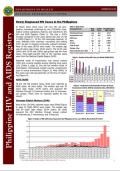
Resource | Publications,
In March 2010, there were 120 new HIV Ab seropositive individuals confirmed by the STD/AIDS Cooperative Central Laboratory (SACCL) and reported to the HIV and AIDS Registry (Table 1). This was a 103% increase compared to the same period last year (n=59 in 2009) [Figure 1]. Of the 120 individuals reported, 13 were detected from voluntary counseling and testing (VCT) as part of ongoing community outreach activities.
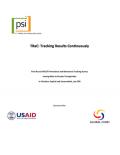
Resource | Publications,
In March 2010, PSI Laos, in collaboration with the Lao Center for HIV/AIDS and STIs (CHAS) and in support of the National HIV/AIDS Program, conducted a survey of male to female Transgenders (MtF TG) in Vientiane Capital and Savannakhet Province. A total of 450 MtF TGs participated in this survey; including 320 in Vientiane Capital and 130 in Savannakhet. Behavioral and disease (HIV/STI) level data were collected to monitor the impact of PSI interventions on key target behaviors among TGs.

Resource | Reviews and Snapshots,
In recognition of the severity of the HIV/AIDS pandemic, international organizations, policymakers, and donors have made bold declarations and set targets for curbing the spread of HIV/AIDS, mitigating its impact, and extending treatment access. For example, the Millennium Development Goals (MDGs), defined by the international community to serve as a framework for measuring country development progress, aim to halt and reverse the spread of HIV/AIDS by the year 2015. In addition, in 2001, 189 nations adopted the Declaration of Commitment on HIV/AIDS at the first-ever United Nations General Assembly Special Session (UNGASS) on HIV/AIDS; this Declaration covers 10 priorities, from prevention to treatment to funding, and was designed as a blueprint to meet the HIV/AIDS MDGs.
Mongolia for the first time produced NASA which covers period 2008-2009 along with Mongolian framework for National AIDS Spending Assessment methodology. All matrices stated in NASA framework were compiled except matrices by Beneficiary Population.
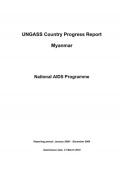
Resource | Publications,
The HIV epidemic in Myanmar is concentrated, with HIV transmission primarily occurring in high risk sexual contacts between sex workers and their clients, men who have sex with men and the sexual partners of these sub-populations. In addition, there is a high
level of HIV transmission among injecting drug users through use of contaminated injecting equipment, with transmission to sexual partners. Latest modelling estimated the HIV prevalence in the adult population (aged 15-49) at 0.61% in 2009. For key populations most-at-risk, surveillance data from 2008 showed HIV prevalence in the sentinel groups at 18.1% in female sex workers, 28.8% in men who have sex with men, and 36.3% in male injecting drug users.
It is estimated that around 238,000 people are living with HIV in Myanmar in 2009, of whom 74,000 are in need of antiretroviral therapy. In the same year, an estimated 17,000 people died of AIDS-related illness. Incidence is estimated at well above 10,000 new infections per year, confirming the continuing need for effective prevention efforts, with increased emphasis on reaching long term female sexual partners of male most at risk populations.
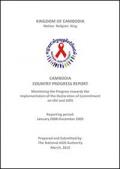
Resource | Publications,
This report has been prepared under the leadership and coordination of the National AIDS Authority (NAA) and with broad participation of all key stakeholders in Cambodia's response to HIV and AIDS. The consultative process involved key government ministries and departments, civil society, including representation of people living with HIV and of most-at-risk populations, and development partners.
The report demonstrates Cambodia's success in building one single comprehensive system to track the HIV epidemic and to monitor and evaluate the national response to it. Although new data has not yet become available for all the 25 UNGASS indicators, Cambodia is this year able to present data against several indicators that could not be reported in previous rounds.
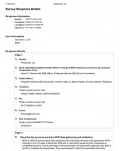
Resource | Publications,
The National Composite Policy Index (NCPI) data submitted by countries was validated for internal consistency and completeness of the response by UNAIDS/Geneva. Illogical values were corrected; countries were contacted in cases of substantial missing data and multiple, non-consolidated NCPI submissions. The PDF files posted contain the validated NCPI data.
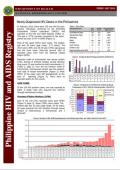
Resource | Fact Sheets,
In February 2010, there were 130 new HIV Ab seropositive individuals confirmed by the STD/AIDS Cooperative Central Laboratory (SACCL) and reported to the HIV and AIDS Registry (Table 1). This was a 177% increase compared to the same period last year (n=47 in 2009) [Figure 1].
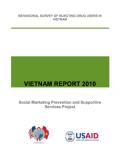
Resource | Publications,
Between December 2009 and February 2010, PSI Vietnam, in partnership with local research agency, Newcare conducted a behavior survey of male injecting drug users, across seven PEPFAR priority provinces in Vietnam (Ho Chi Minh City, Hanoi, Hai Phong, Quang Ninh, An Giang, Nghe An, and Can Tho). Behavioral and other data relevant to HIV risk were collected, together with a wider range of social and demographic information.
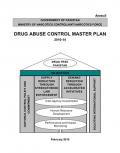
Resource | Publications,
The Master Plan for Drug Abuse Control 2010-2014 has been prepared by the Ministry of Narcotics Control and the Anti Narcotics Force, based on a consultative process through the Steering Committee led by the Anti Narcotics Force.
Objectives have been defined and achievable targets set with emphasis on both supply and demand reduction activities. Lessons learnt from the implementation of the last Master Plan have been addressed. The Master Plan takes into account the impact of the worsening drug situation in Afghanistan during 2006 and 2007 resulting in an unprecedented increase in poppy cultivation.
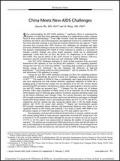
Resource | Publications,
Since acknowledging the HIV/AIDS epidemic, significant efforts to understand the epidemic in China have been undertaken resulting in a comprehensive policy response based on those understandings. From 2003 onwards, China has implemented ambitious treatment, prevention, and control programs, and significant resources to combat HIV/AIDS have been allocated, resulting in increased government infrastructure and capacity. Many successes have occurred since 2003; however, new challenges are emerging, and many previously identified challenges remain and continue to evolve. Although the research effort into properly understanding HIV/AIDS in China continues to expand, it is necessary to translate scientific findings into public health programs, which can be implemented nationwide. China does not yet have the luxury of complacency in its response to HIV/AIDS. This special edition of the AIDS Journal of Acquired Immune Deficiency Syndromes presents research into these new and continuing AIDS challenges.





